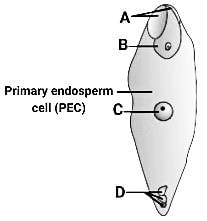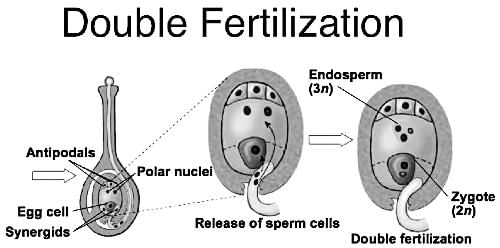NEET Exam > NEET Tests > Test: Double Fertilisation - NEET MCQ
Test: Double Fertilisation - NEET MCQ
Test Description
5 Questions MCQ Test - Test: Double Fertilisation
Test: Double Fertilisation for NEET 2025 is part of NEET preparation. The Test: Double Fertilisation questions and answers have been prepared
according to the NEET exam syllabus.The Test: Double Fertilisation MCQs are made for NEET 2025 Exam.
Find important definitions, questions, notes, meanings, examples, exercises, MCQs and online tests for Test: Double Fertilisation below.
Solutions of Test: Double Fertilisation questions in English are available as part of our course for NEET & Test: Double Fertilisation solutions in
Hindi for NEET course.
Download more important topics, notes, lectures and mock test series for NEET Exam by signing up for free. Attempt Test: Double Fertilisation | 5 questions in 5 minutes | Mock test for NEET preparation | Free important questions MCQ to study for NEET Exam | Download free PDF with solutions
Test: Double Fertilisation - Question 1
Fusion of a male gamete with an egg in the embryo sac is called______.
Detailed Solution for Test: Double Fertilisation - Question 1
Test: Double Fertilisation - Question 2
What is the central cell called after triple fusion in double fertilisation?
Detailed Solution for Test: Double Fertilisation - Question 2
Test: Double Fertilisation - Question 3
The diagram shows a fertilised embryo sac where

Statement I:A is diploid and B is triploid
Statement II:C are degenerating antipodal cells and D are degenerating synergids

Statement I:A is diploid and B is triploid
Statement II:C are degenerating antipodal cells and D are degenerating synergids
Detailed Solution for Test: Double Fertilisation - Question 3
Detailed Solution for Test: Double Fertilisation - Question 4
Test: Double Fertilisation - Question 5
In the process of double fertilisation in flowering plants, which of the following statements correctly explains the sequence of events?
Detailed Solution for Test: Double Fertilisation - Question 5
Information about Test: Double Fertilisation Page
In this test you can find the Exam questions for Test: Double Fertilisation solved & explained in the simplest way possible.
Besides giving Questions and answers for Test: Double Fertilisation , EduRev gives you an ample number of Online tests for practice
Download as PDF





















